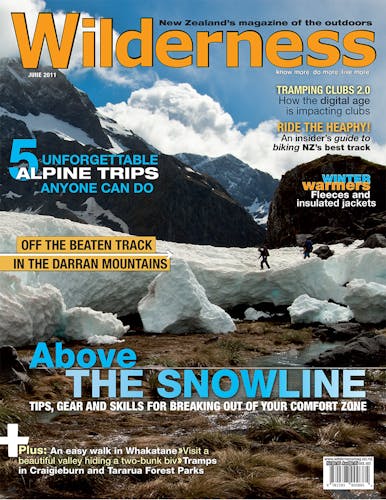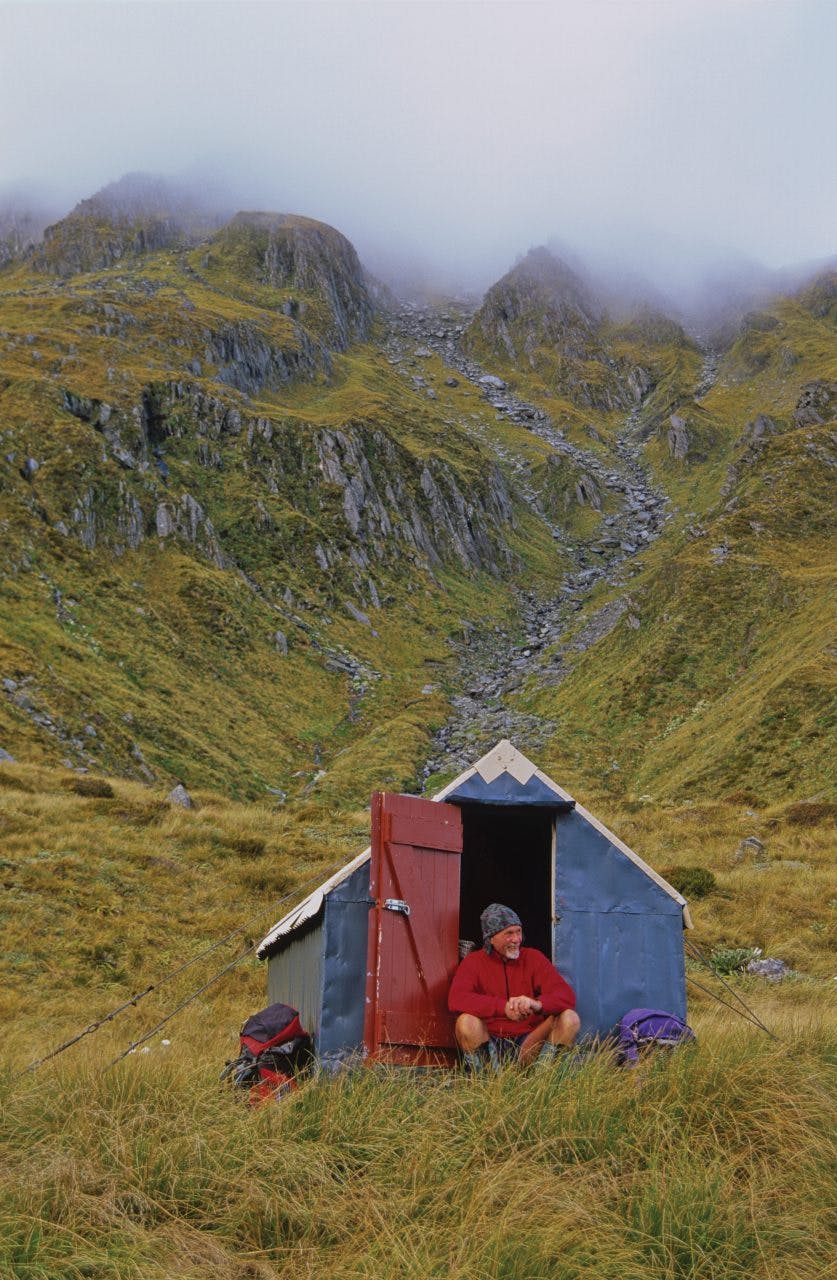Three places to bed down for the night
Despite the fact they aren’t much bigger than a medium-sized tent, I have a great fondness for staying at two-bunk bivs. Often called ‘dog boxes’ by trampers, these now-classic bivs resemble dog kennels in shape, if not size, and occupy many remote parts of the backcountry.
Built by the New Zealand Forest Service (NZFS) for deer cullers during the 1950s and 1960s, these bivs were located in places that did not justify the expense of building a larger four- or six-bunk hut. Cullers used them as bases for summer hunting on the tops and during bad weather would retreat to a decent-sized hut in a nearby valley. In his fascinating report, Wild Animal Huts, historian Michael Kelly identifies several different types of biv built by the NZFS during its heyday.
Early bivs were basic indeed – basically just a shell on piles. You slept on the floor (usually on mattresses) and there might be a tiny shelf with a kerosene cooker. One small window – usually opposite the door – leaked in some light, and often the bivs were unlined. Storage comprised of a tin, or shoving stuff under the biv. The earliest bivs were built about 1957 and 1958, and a surviving example is Minchin Biv in Arthur’s Pass National Park.
The B49 Bivouac was an early model, and the West Coast’s Browning Biv (1960) is a good example of one in near-original condition. Another later model from the mid-1960s was the B55 Bivouac, but by the end of the 1960s, biv design had evolved into a more comfortable structure you could stand upright in, they boasted bunks and even a cooking bench. In other words, bivs became small huts. A good example is the upright Lake Stream Biv in Victoria Forest Park, near Springs Junction. According to Kelly, the West Coast experimented with at least two different stand-up models known as B142 and B143 Bivouacs.
While they can be a bit cramped in bad weather, many of these two-bunk bivs are superbly located, often just above the bushline. Because they constitute a more spartan form of tramping, they don’t attract the masses.
Kaweka Flats Biv, Kaweka Forest Park, Hawke’s Bay
My second overnight tramp was to Kaweka Flats Biv, a classic orange dog box set on some grassy flats with fine views of the ragged main range of the Kawekas. It’s reached on a two-hour tramp from Makahu Saddle, following a track through beech forest and across several small gullies. DOC has faithfully restored the biv to near-original condition and colour (bright orange). It’s still a great place to take kids on their first overnight tramp.
McGregor Biv, Tararua Forest Park, Wairarapa
Remote McGregor Biv occupies a shoulder on a spur near McGregor, in the Tararua Range. The quickest route to the hut lies along the Atiwhakatu Valley and either up the East Holdsworth or Jumbo tracks. Past Jumbo, an unmarked route leads over the tops to Angle Knob and beyond, where a signpost indicates the turn-off to the biv. DOC has maintained this biv and it now has a water tank and a small deck in front. Typically for a small biv, there’s no long-drop.
Frew Saddle Biv, Whitcombe Valley, West Coast
Frew Saddle Biv occupies a grand location on the tops, near a small basin of tarns, and forms part of the accommodation on the Toaroha-Frew Saddle-Whitcombe circuit. It’s a curious design, not a typical dog box, and has bunks – although you can’t stand up in it. I’ve been there three times; the first time only the roof poked above the snow, the second occasion required careful movement inside or the hut rocked due to a broken corner pile. DOC has since repainted it and fixed the piles.
Like other bivs, it’s part of our backcountry history.








